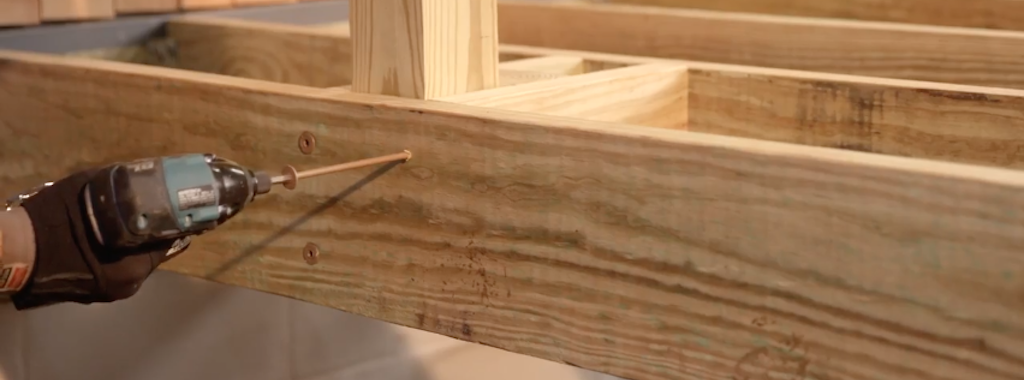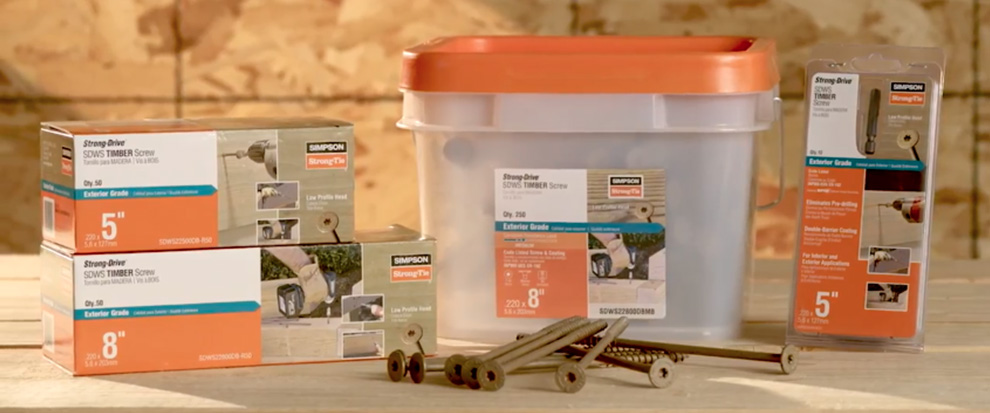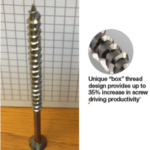Lag screws are traditionally specified for many structural loads in wood construction. However, recent innovations in engineering for self-tapping wood screws have made them an increasingly popular, labor-saving alternative to lag screws. In the following post, Aram Khachadourian, P.E., of Simpson Strong-Tie discusses the structural and economic advantages of this option.
In the past several years, there’s been an increase in the use of screws in applications that have traditionally been reserved for lag screws. Innovation in screw design has fueled this shift. Proprietary self-tapping wood screws now offer many benefits in comparison to commodity lag screws. Today’s post will discuss some of those benefits.
Lag screws have been used for decades and not much has changed over that time. Newlin and Gahagan published the paper “Lag-Screw Joints: Their Behavior and Design” back in 1938. This paper describes their research into a variety of lag screws purchased from local hardware stores. They developed the predrilling requirements and derived the basic equations for determining withdrawal and lateral load resistance that are still being used today. The paper was published by the US Department of Agriculture and was available for 10 cents a copy. The technology behind proprietary screws, however, has moved beyond that Depression-era approach.
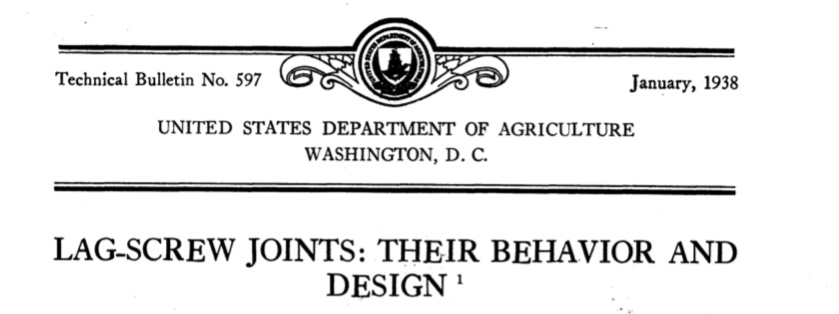
One of the obvious drawbacks of installing lag screws is the installation complexity and extra time it takes for preboring or predrilling a lead hole into the wood. In the NDS, section 12.1.4, lag screws greater than 3/8″ in diameter require a predrilled lead hole whether loaded by withdrawal or lateral forces. The required predrilled hole is a two-step hole. The clearance hole for the shank is supposed to match the diameter and length of the shank, and the part of the lead hole for the threaded shank depends on the specific gravity of the wood member and the relative diameter of the screw.
Using proprietary self-tapping wood screws instead of lag screws can relieve the installer of the predrilling hassle. Lag replacement wood screws are engineered with drill points and optimized thread designs, and utilize knurls or reamers that prepare the wood to receive the shank of the screw. No predrilling means an installer can step right up and just drive in the screw. The installation of a self-tapping screw is at least twice as fast as that for a lag screw, saving half the labor cost. In addition, the engineer knows that the screw will perform as designed because it was installed as designed. When our engineers design a Simpson Strong-Tie screw, they go to great lengths so that the installer almost never has to predrill the wood. For structural screws that require evaluation reports, qualification testing is performed without predrilled lead holes so that the qualified loads are based on the installation instructions that require no predrilled lead holes.
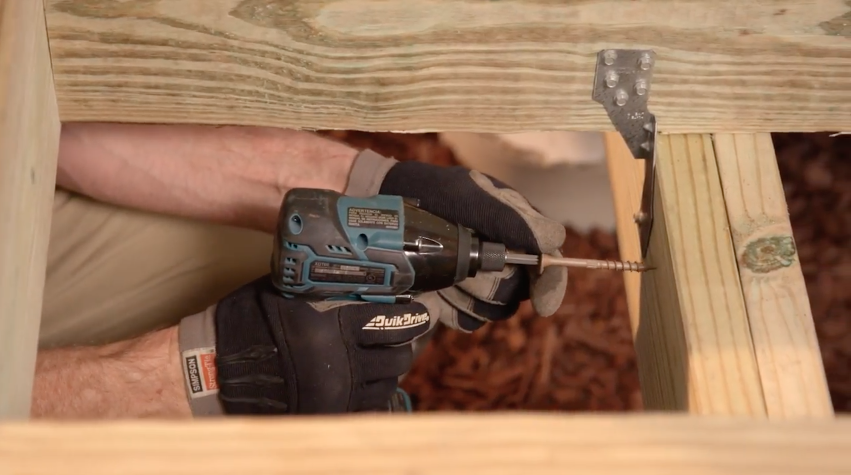
The other factor our engineering team considers is the performance of screws in wood. Often, using a greater number of screws in place of larger-diameter lag screws can increase the ductility of the failure mode, which is advantageous in certain applications, such as for seismic holdowns. The special features and manufacturing processes of low torque self-tapping wood screws can often result in allowable loads that are comparable to lag screws with a much larger diameter. These loads are typically determined through the testing and load rating requirements of ICC-ES AC233. You can see how our screws compare to lag screws in the engineering letter L-F-LAGSUB18 found on our website, strongtie.com.
As more types of screws are developed and more conditions are tested, lag replacement screws will continue to replace lag screws in many applications, including ledger connections, pile construction, girder truss and beam connections, steel connector installations and many more.

